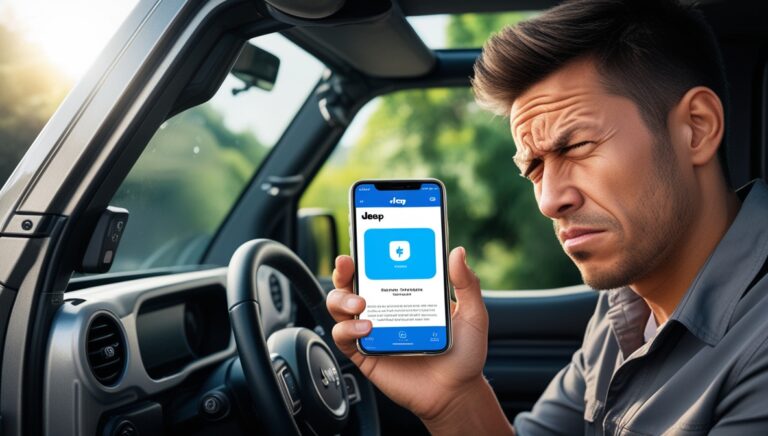Stop Start Not Ready Battery Protection Mode- Ways To Fix It!
We know how frustrating it can be when your car displays the “Stop/Start Not Ready Battery Protection Mode” warning. But you know whenever the warning message shows in your vehicle, it potentially means that there are some issues with the powering system of the vehicle.
Actually, a “not ready” notification from a vehicle’s stop-start system typically indicates a low battery charge or the need for replacement. Battery protection mode is activated in unsafe conditions and remains until the issue is resolved, with the battery automatically restoring functionality when safe.
So to fix the issue, you need to diagnose the cause and take action accordingly. But how to do so. Don’t worry as we have brought about a comprehensive guide to help you out. All you just need to do is keep on reading.
Key Takeaways:
- Regularly check and maintain your vehicle’s battery and charging system to prevent issues with the Stop/Start feature.
- Addressing underlying causes promptly can restore the proper functioning of the Stop/Start system and ensure optimal performance.
- Be proactive in diagnosing and fixing problems related to the Stop/Start feature to avoid potential breakdowns and inconvenience.
What Is Battery Protection Mode?
Battery Protection Mode in a vehicle prevents battery drain by automatically shutting off power-consuming systems. It ensures the battery isn’t depleted when the engine is off.
This mode activates when the battery charge drops below a certain level. Essential functions, like the alarm system, are maintained, but non-critical features, like interior lights, are turned off.
This helps preserve enough power to start the vehicle later, ensuring you aren’t stranded with a dead battery.
What Does It Mean When My Car Says Stop/Start Not Ready, Battery Charging?
When your car says “Stop/Start Not Ready Battery Charging,” it means the battery isn’t sufficiently charged to support the Stop/Start system.
The engine won’t automatically shut off at stops to conserve energy. The car’s battery is being charged to reach the required level for Stop/Start functionality.
This message ensures you’re aware that the system is temporarily inactive until the battery is adequately charged for optimal performance.
What Causes The Stop/Start Not Ready, Battery Protection Mode Warning? How To Fix It?
It can signal various underlying issues affecting a vehicle’s battery or charging system. Understanding the causes and implementing appropriate solutions is essential for restoring the functionality of this feature.
1# Low Or Dead Battery
A low or failing battery can trigger the “Stop/Start Not Ready Battery Protection Mode.”
The system requires a well-charged battery to function correctly. If the battery’s charge drops too low, the Stop/Start system gets disabled to conserve power for essential operations.
Over time, battery capacity decreases, and if it can’t hold a charge, replacement is necessary. Ensuring the battery is in good condition is vital for the Stop/Start system to work reliably.
How to fix:
To fix the issue, a battery replacement is likely needed. Start by confirming the diagnosis with a voltmeter or a mechanic.
Purchase a compatible battery for your vehicle model. Replace the old battery by first disconnecting the negative cable, then the positive, removing the old battery, placing the new one, and reconnecting the cables in reverse order.
Finally, reset the Stop/Start system according to your vehicle’s manual. This should restore the system’s functionality.
2# Faulty Auxiliary Battery
Another possible cause of the issue is a faulty auxiliary battery.
The auxiliary battery, also known as the secondary or accessory battery, is responsible for powering various electrical components in the vehicle, such as lights, entertainment systems, and navigation systems, especially in hybrid or electric vehicles.
When this battery fails or malfunctions, it can disrupt the proper functioning of systems like the Stop/Start feature.
Signs of a faulty auxiliary battery include dimming lights, electrical system malfunctions, or difficulty starting the vehicle.
How to fix:
To address the issue stemming from a faulty auxiliary battery:
- Verify if the auxiliary battery is the culprit by testing its voltage or consulting a professional.
- Acquire a suitable replacement battery compatible with your vehicle’s specifications.
- Disconnect the old auxiliary battery, taking care to remove the negative terminal first. Install the new battery, reconnecting the terminals in reverse order.
- If necessary, follow your vehicle’s manual to reset any affected systems, ensuring they function correctly with the new auxiliary battery.
3# Problem With The Charging System
Another potential cause of the issue could be a problem with the charging system.
The charging system comprises components like the alternator, voltage regulator, and wiring responsible for maintaining the battery’s charge while the engine is running.
If any of these components fail or malfunction, the battery may not receive sufficient charge, leading to issues with the Stop/Start system.
How to fix
Follow these steps to fix the problem.
- Step 1: Diagnostic Check:
Perform a thorough diagnostic check of the charging system components, including the alternator, voltage regulator, and wiring, to identify any faults or malfunctions.
- Step 2: Repair or Replace Faulty Components:
If any components are found to be faulty or malfunctioning during the diagnostic check, repair or replace them as necessary.
This may involve tasks such as repairing damaged wiring, replacing a faulty alternator, or installing a new voltage regulator.
After repairing or replacing faulty components and ensuring the battery is in good condition, conduct thorough testing of the charging system to verify proper operation and adequate battery charging.
4# Leaving Car Unattended For A Long Time
Leaving a car unattended for an extended period can contribute to the warning message.
During prolonged periods of inactivity, the battery may gradually discharge due to parasitic drains from systems like alarms or memory functions.
As the battery charge diminishes, it may fall below the threshold required for the Stop/Start system to operate, triggering the warning message.
How to fix:
To address the issue resulting from leaving a car unattended for a long time:
- Use a battery charger or jump-start the vehicle to replenish the battery’s charge. Take the car for a prolonged drive to allow the alternator to recharge the battery fully.
- If leaving the vehicle unattended for extended periods is unavoidable, consider using a trickle charger to maintain the battery’s charge level.
- Minimize the drain on the battery by disconnecting non-essential electrical components or using a battery disconnect switch when the vehicle is not in use.
- Schedule regular maintenance checks to ensure the battery and charging system are in good condition, especially before extended periods of inactivity.
5# Defective Intelligent Battery Sensor
Another reason is the intelligent battery sensor. The IBS monitors battery parameters and communicates with the vehicle’s control unit.
If it malfunctions, the control unit may not receive accurate data, leading to improper management of the Stop/Start system.
Symptoms include frequent warning messages, irregular charging, or failure to start the engine.
Replacing the defective IBS with a functioning unit compatible with the vehicle model can resolve the issue and restore proper functionality.
How to fix:
Follow the below steps to resolve the problem.
- Diagnose the faulty Intelligent Battery Sensor (IBS) through diagnostic tools or professional assessment.
- Obtain a compatible replacement IBS for your vehicle’s make and model.
- Install the new IBS following manufacturer instructions, ensuring secure connections.
- Reset affected systems such as the Stop/Start feature according to the vehicle’s manual.
- Test the functionality of the Stop/Start system to ensure proper operation without warning messages.
FAQs
Now let’s check out some queries that the car owners like you mostly asked about. You can check it below.
How long does a stop start battery take to charge?
The charging time for a stop/start battery varies depending on factors like battery condition, charging system efficiency, and driving habits. Generally, it takes several hours of driving or using a dedicated battery charger to fully charge.
How do I know if my start-stop battery is bad?
You’ll notice signs like dimming lights, difficulty starting the engine, or repeated “Stop/Start Not Ready” warnings. A diagnostic check by a mechanic can confirm if the start-stop battery needs replacement.
Can a completely dead battery be recharged?
A completely dead battery can sometimes be recharged using a battery charger. However, extreme cases may require professional intervention or battery replacement if the cells are damaged beyond recovery.
Does battery affect stop-start?
Yes, the battery significantly affects the Stop/Start system. A low or failing battery can prevent the system from functioning properly, leading to issues like the warning message.
What causes stop-start faults?
Stop-start faults can result from a variety of issues, including low battery charge, faulty auxiliary battery, charging system problems, defective Intelligent Battery Sensor (IBS), or issues with related components like alternators or wiring.




